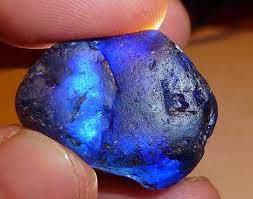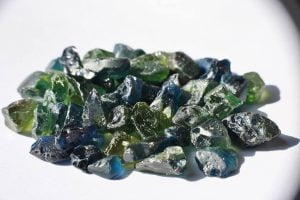Sapphire Thailand
 Sapphire from Thailand is highly regarded in the gemstone industry. Thailand serves as a major trading hub for both rubies and sapphires, making it one of the most important centers for corundum trade worldwide. The country has gained a reputation for offering high-quality sapphires in every colour.
Sapphire from Thailand is highly regarded in the gemstone industry. Thailand serves as a major trading hub for both rubies and sapphires, making it one of the most important centers for corundum trade worldwide. The country has gained a reputation for offering high-quality sapphires in every colour.
While gems from all over the world are found here, Thailand’s sapphire mines are located in various regions, with one notable area being Chanthaburi Province. Chanthaburi has a long history of sapphire mining and is known for producing beautiful twilight blue sapphires. The mining process involves extracting the sapphires from alluvial deposits, which are sedimentary accumulations found in riverbeds or floodplains.
Thailand’s sapphire industry has played a significant role in the global gemstone trade. The country is responsible for a substantial portion of the world’s trade in precious gemstones, with approximately 80% of natural sapphire rings (rubies) originating from Thailand. Thai sapphires are favored for their vibrant blue color, clarity, and overall quality.
 Sapphire gemology
Sapphire gemology
Sapphire gemology is the study of sapphires, which are a type of gemstone primarily known for their beautiful blue color. Sapphires belong to the corundum family of minerals, with the chemical formula Al₂O₃. While sapphires are typically associated with blue hues, they can also occur in other colors such as pink, yellow, green, and even colorless, depending on the presence of certain impurities and trace elements.
In gemology, sapphire properties such as color, clarity, cut, and carat weight are assessed to determine their quality and value. The color of a sapphire is one of the most important factors, with highly saturated and vivid blue sapphires being the most sought after. The presence of inclusions, which are natural imperfections within the gemstone, can affect its clarity. The cut refers to how well the sapphire has been faceted, influencing its brilliance and overall appearance. Carat weight is a measure of the sapphire’s size.
Sapphires have a long history and have been treasured as precious gemstones for centuries. They are often associated with qualities such as wisdom, loyalty, and nobility. Notable sources of sapphires include Kashmir, Myanmar (Burma), Sri Lanka, Madagascar, and Australia.
 Sapphire geology
Sapphire geology
Sapphires are a variety of the mineral corundum, which is an aluminum oxide (Al₂O₃). They are formed in specific geological environments and can be found in various parts of the world. Sapphires are typically associated with igneous and metamorphic rocks, such as granites, gneisses, and basaltic lavas.
Sapphires are often found in primary deposits, which are the original source of the gemstone. These deposits are formed through a combination of geological processes, including regional metamorphism, hydrothermal activity, and magmatic activities. During the formation of sapphires, high temperatures and pressures, as well as the presence of certain elements and fluids, play a crucial role in their development.
Important sapphire-producing regions include countries like Sri Lanka, Madagascar, Myanmar (Burma), Australia, and Tanzania. These regions are known for their favorable geological conditions that support the formation of sapphires. In Sri Lanka, for example, sapphires are found in gem gravels derived from weathered crystalline rocks. In Madagascar, sapphires are associated with basaltic lavas and pegmatite veins.
The color of sapphires is influenced by the presence of certain impurities or trace elements. For blue sapphires, the blue color is often attributed to the presence of iron and titanium impurities. Different geological factors, such as the composition of the host rock, the availability of certain elements, and the cooling rate of the magma or hydrothermal fluids, can contribute to the variation in color and quality of sapphires.
Vietnam is known for its diverse range of gemstones. Besides peridot, gemstones like sapphires, rubies, spinels, aquamarine, topaz, quartz crystals, tektite, and opal can also be found in the country. The gemstone mining industry in Vietnam is primarily concentrated in the town of Luc Yen, located in the northeast region of the country. This area is relatively rural and serves as a hub for gemstone extraction and trade.
Our other Website Gemsandmore gemsandmore.com
0448190538
PO Box 127, TAIGUM QLD AUSTRALIA 4018

 Sapphire gemology
Sapphire gemology Sapphire geology
Sapphire geology